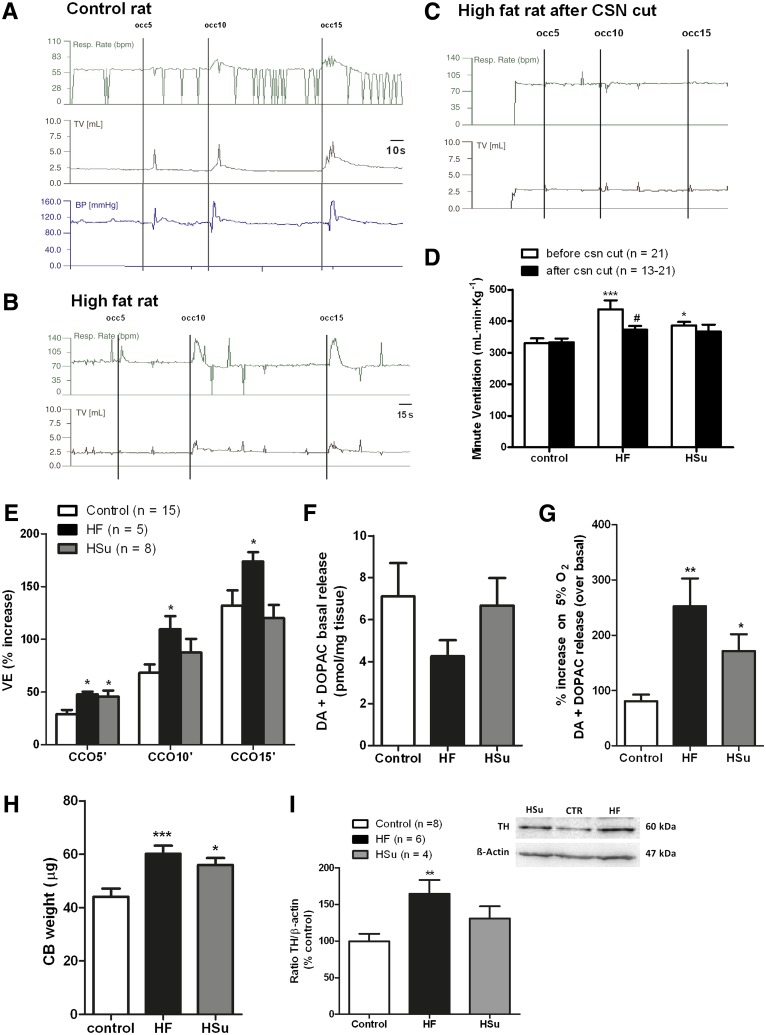FIG. 1.
CB activity is increased in rat models of IR and HT. A and B: Typical recordings of respiratory rate (Resp. Rate) (bpm), tidal volume (mL), and blood pressure in basal conditions and in response to ischemic hypoxia, induced by occlusions of common carotid artery (CCO) in a control rat and in a rat submitted to an HF diet. C: Typical recording of ventilatory parameters after CSN cut in an HF rat. D: Mean minute ventilation (VE) (product of respiratory frequency and tidal volume) in control, HA, and HSu rats. E: Effect of common carotid occlusion of 5, 10, and 15 s on minute ventilation in control, HF, and HSu rats. F: Effect of hypercaloric diets on CB catecholamines (dopamine [DA] plus DOPAC) basal release (20% O2 plus 5% O2 balanced N2) (n = 5). G: Effect of hypercaloric diets on the release of catecholamines from CB evoked by hypoxia (5% O2 plus 5% CO2 balanced N2) (n = 5). H: Effect of HF and HSu diets in CB weight. Control n = 19, HF n = 27, HSu n = 24. I: Effect of HF and HSu diets on the inmmunoreactivity for tyrosine hydroxylase (TH) (60 KDa) expressed as the ratio tyrosine hydroxylase to β-actin (43 KDa) expression. Left panel: Representative immunoreactivity for tyrosine hydroxylase and β-actin in the CB in % of control, HF, and HSu animals. Bars (D–I) represent means ± SEM. One- and two-way ANOVA with Dunnett and Bonferroni multicomparison tests, respectively; *P < 0.05, **P < 0.01, ***P < 0.001 vs. control; #P < 0.05 vs. values within the same group.

